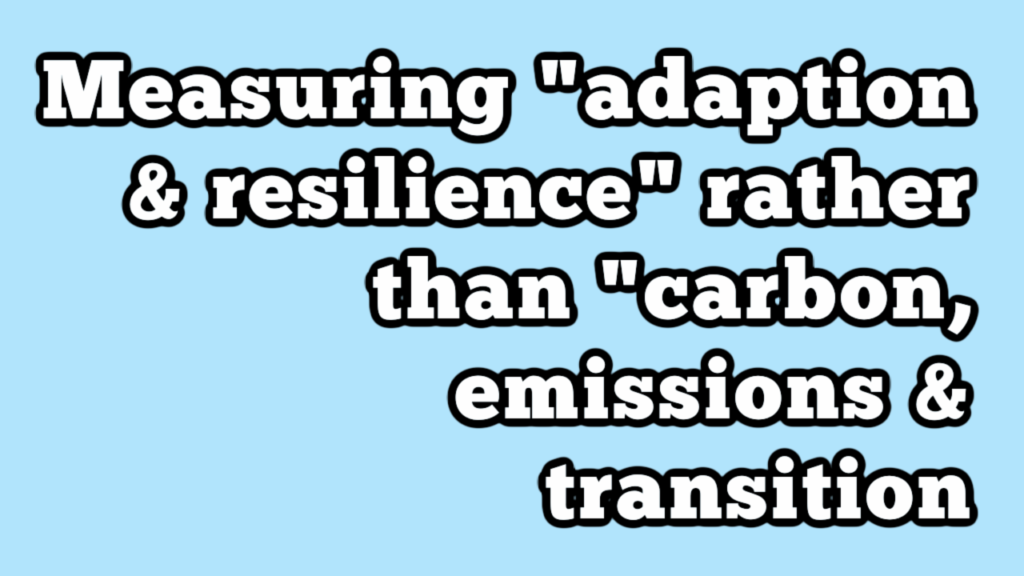Measuring “adaption & resilience” rather than just “carbon, emissions & transition”

– ESG analytics should capture “adaption & resilience” and not just “carbon, emissions & transition”
– It’s still not a mainstream topic, but definitely one that is getting more attention.
This question from Willis Towers Watson’s John Firth led to a number of interesting comments:
I can see many ESG analysts and investors referring to their use of ESG with regard to carbon, emissions and transition – but there appears to be very little consideration in ESG analytics to the impacts of a changing climate and how an investment is contributing towards adaptation and resilience. Are you seeing any tangible action in this regard? Is there anything you have seen which sets out how ESG is covering climate change physical risks – the data used and the evaluation process?
For example, Peter Hall, Global Director for Sustainable & Resilient Infrastructure at Wood, wrote this:
We are applying in the market our ‘ADAPT for resiliency’ framework (along with a ResilienceLens screen) that aligns climate risks (shocks/stresses) with both adaptation solutions (reliable performance) and alignment with co-benefits from these assets. Building assets that can absorb/function as future climate risks occur & maximizing community benefits are becoming more of a requirement.
This focus on aligning what a project does (services) to ESG outputs should also be a key part of build back better programs coming off Covid (along with urban resilience funds) to accelerate this needed connection & alignment.
And Emilie Mazzacurati, Global Head of Moody’s Climate Solutions and CEO of Four Twenty Seven, wrote:
We work with investors and banks who use our location / asset-level climate risk analytics in their TCFD report as well as for investment decisions and risk management. Our analytics also include an assessment of how companies are managing physical risk and soon data on investments in technologies that can support adaptation and resilience. It’s still not a mainstream topic, but definitely one that is getting growing attention.
